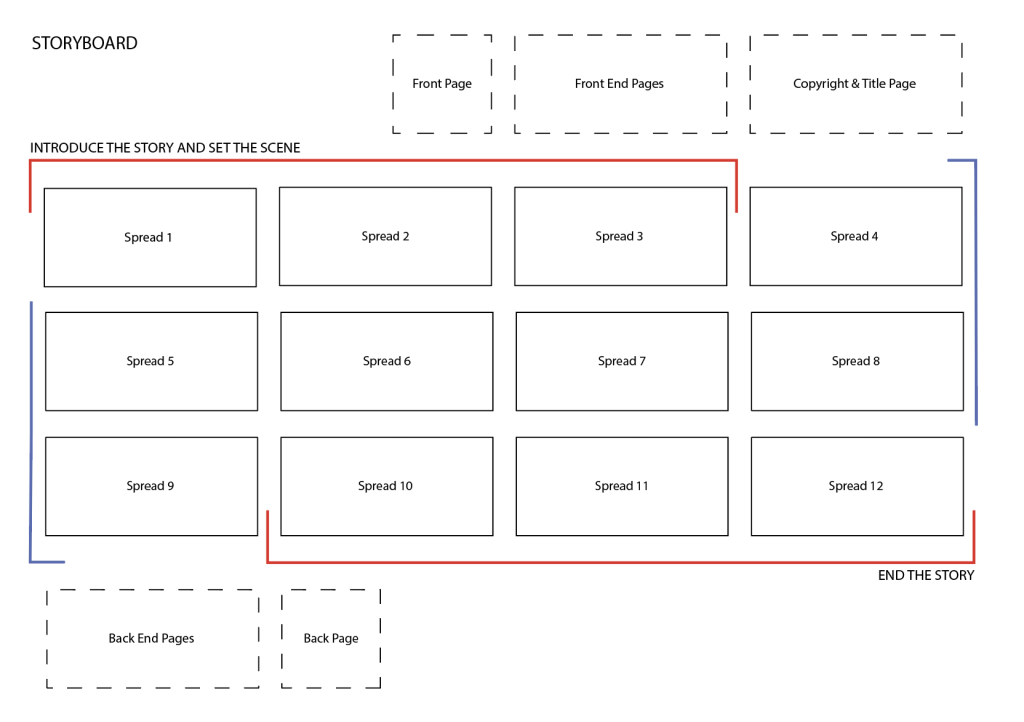Project Intentions
My project intentions are to create, develop and market a children’s picture book that delves into the significant need for sustainable practices, specifically plastic pollution and encouraging the ‘reduce, reuse and recycle’ approach for environmental preservation. The captivating children’s book will not only entertain adults and children but also serve as a powerful tool to educate young minds about the pressing need for environmental sustainability. The narrative will draw inspiration from Julia Donaldson’s writing techniques, whilst the vibrant illustrations will be inspired by Toulouse-Lautrec’s artistic techniques. The final picture book intends to encourage a sense of responsibility in the young minds engaging with the book.
Alongside the development of the picture book I intend to develop a comprehensive marketing strategy to promote and sell the final book aimed at the adults making the purchase. This will involve a crafted brand identity, including a logo, book cover, shipping/packaging design and more. A dedicated website will serve as an informational and interactive space to learn more about the final book, reinforcing the messages behind the narrative. To complement the website, a companion app will be developed, offering interactive elements, allowing children to explore and engage with the books theme in an immersive way. Designing the app with children in mind will aid in internet safety ensuring the children are restricted to the use of only the app, ensuring they will not be tempted to explore the wider web without parental consent.
Additionally, a marketing campaign will be produced and posted across varied platforms. Intended to extend the reach of the project, creating a community of like minded individuals who are passionate about encouraging environmental awareness in future generations.
The visual representation of the project scope below provides a clear overview of developmental steps.
Target Audience
The dual target audience for the book includes children aged 3 – 6 and adults, including parents, schools and libraries. While the child is the primary reader, the adult is the assumed purchaser. It is imperative to present the final picture book in a way that resonates with the adults involved. emphasising not only the educational value of the book but the great impact of a sustainable lifestyle.
Practical Book Layout
Edward Tufte – Layering and Separation Technique.
‘Note the effectiveness and elegance of small spots of intense, saturated colour for carrying information – a design secret of classical cartography.’ (Tufte. E.R, 1990). Combining Julia Donaldson’s practical 32-page spread storyboard technique and Edward Tufte’s layering and separation technique, I have developed a straightforward storyboard structure that clearly outlines important breaks throughout the children’s book.
Design Sample – Initial Storyboard Book Sample
Narrative Goals

‘Story-based or fiction picture books are usually 32 pages long and vary between 500 to 1000 words. They are designed for preschoolers and children in the first few years of primary school, and are usually intended to be read aloud as a shared experience between an adult and child’ (Penguin, 2022). The limitations that come with word counts in picture books indicate that the narrative should be concise yet vivid and clear.
The picture book narrative arguably stands as the most important element of the project, as it holds the potential to ignite a sense of mindfulness not only in children but also in adults who share the experience of the book. The storytelling should be appealing and approachable, ensuring that the children engaging with the book feel safe and comfortable in the ever-changing world.
The narrative objectives are as follows:
· Raise awareness of the impacts of single-use plastics.
· Cultivate environmental awareness in adults and children.
· Inspire imagination and creativity in the significance of reducing, reusing, and recycling.
Project Limitations
The limitations encountered when developing the scope of the project include the idea of making an immersive VR space for children to experience the theme of the book. Although in theory this aspect could elevate the experience of the book it may not be ethical for young children to be involved with virtual realities. As Liz Repking states ‘While very little is known about the effects of immersive reality on adults, there is even less knowledge on the impact of such systems on the sensorimotor abilities in young children.’ (Repking, 2022). Implementing this technology into the project may deter adults away from purchasing the book if they do not approve of virtual reality experiences.
Project Scope – Gantt Charts
The below visual representations are Gantt Charts used to visualize the project timeline and milestones throughout all three assignments.


References
Donaldson, J. (2022) Julia Donaldson: Writing children’s picture books, Julia Donaldson | Writing Children’s Picture Books | BBC Maestro. Available at: https://www.bbcmaestro.com/courses/julia-donaldson/writing-children-s-picture-books/trailer?autoplay=true (Accessed: 24 October 2023).
Donaldson, J. (2022) Julia Donaldson: Writing children’s picture books, Julia Donaldson | Writing Children’s Picture Books | BBC Maestro. Available at: https://www.bbcmaestro.com/courses/julia-donaldson/writing-children-s-picture-books/lessons/what-is-a-picture-book-practicalities?autoplay=true (Accessed: 24 October 2023).
Kottke, J. (2020) Edward Tufte’s new book: Seeing with fresh eyes, kottke.org. Available at: https://kottke.org/20/10/edward-tuftes-new-book-seeing-with-fresh-eyes (Accessed: 25 October 2023).
Invaluable (2019) 8 children’s book illustrators who brought picture books to life, Invaluable. Available at: https://www.invaluable.com/blog/childrens-book-illustrators/ (Accessed: 26 October 2023).
Penguin (2021) How to write a children’s Picture book, How to write a children’s picture book. Available at: https://www.penguin.co.uk/articles/company-article/how-to-write-a-children-s-picture-book (Accessed: 25 October 2023).
Repking, L. (2022) The Occulus Quest 2: A parent’s guide to the hottest new toy, Cyber Safety Consulting. Available at: https://www.cybersafetyconsulting.com/the-occulus-quest-2-a-parents-guide-to-the-hottest-new-toy/#:~:text=Risks%20to%20Consider&text=Perhaps%20that’s%20why%20the%20Oculus,can%20have%20adverse%20health%20effects. (Accessed: 02 November 2023).
Tufte. E.R. 1990. Envisioning Information. Cheshire, Connecticut: Graphics Press. (p. 91).




